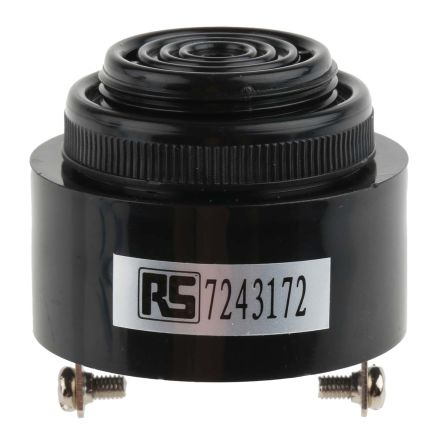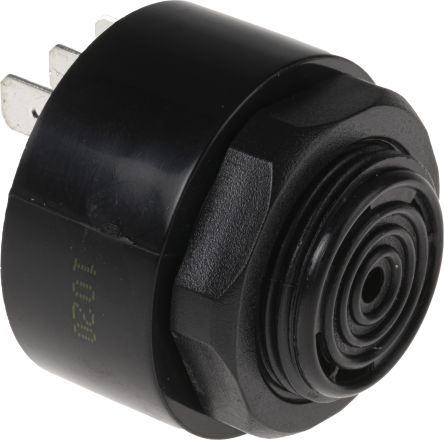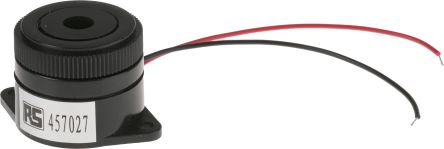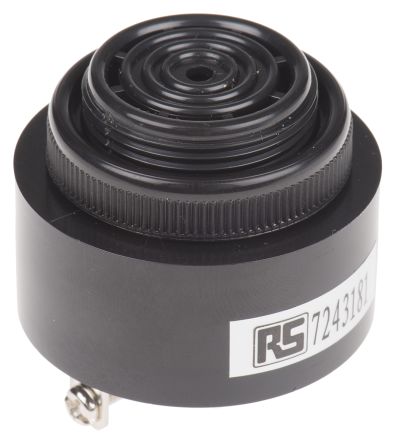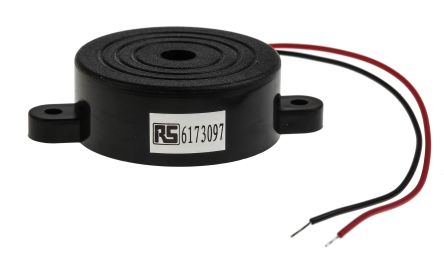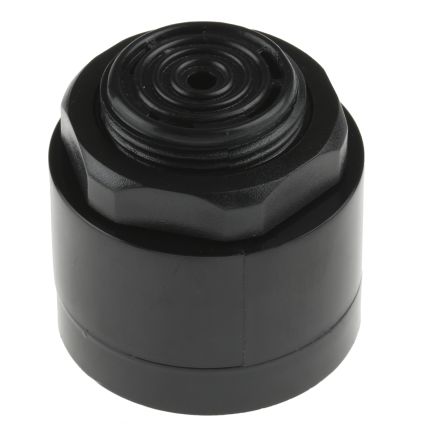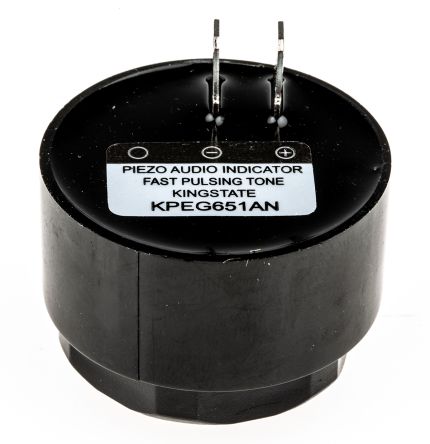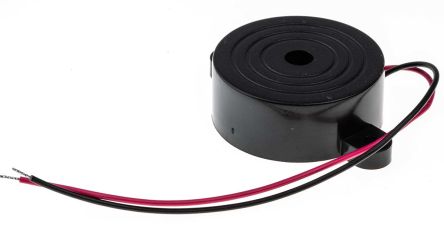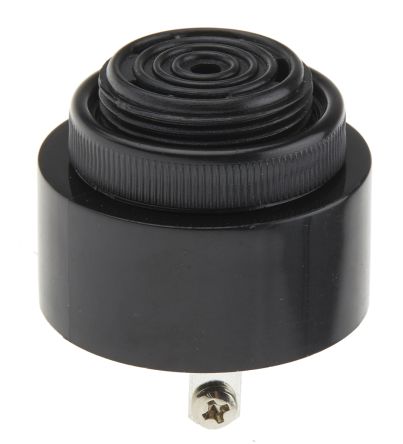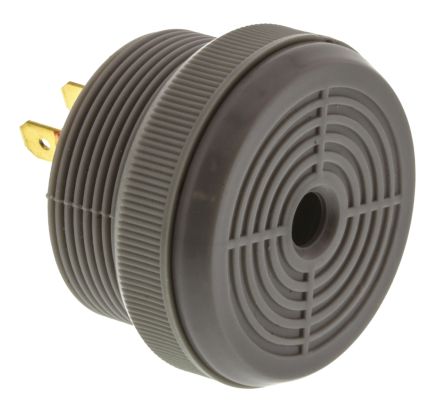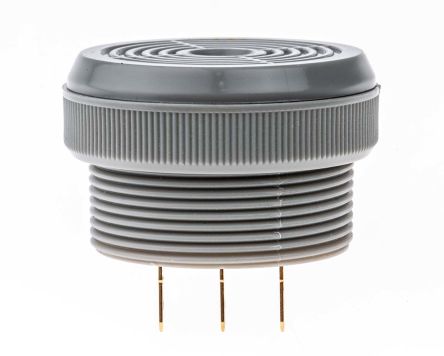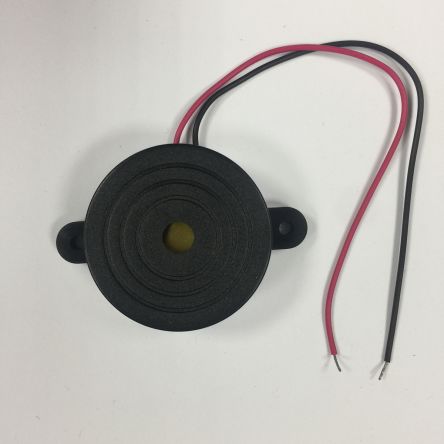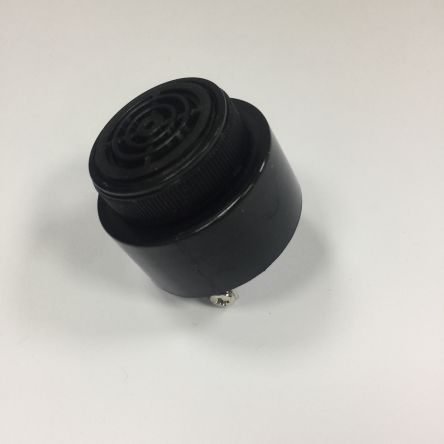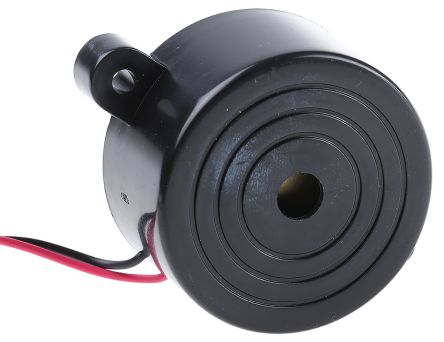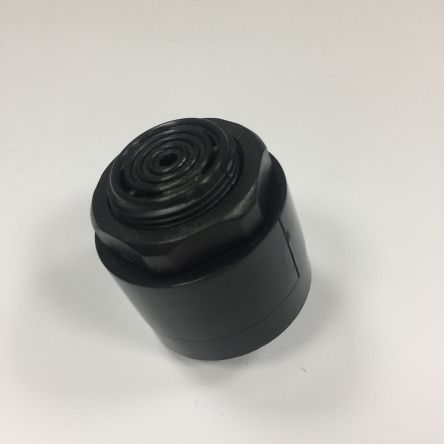- Automation & Control Gear
- Cables & Wires
- Enclosures & Server Racks
- Fuses & Circuit Breakers
- HVAC, Fans & Thermal Management
- Lighting
- Relays & Signal Conditioning
- Switches
- Batteries & Chargers
- Connectors
- Displays & Optoelectronics
- ESD Control, Cleanroom & PCB Prototyping
- Passive Components
- Power Supplies & Transformers
- Raspberry Pi, Arduino, ROCK, STEM Education & Development Tools
- Semiconductors
Piezo Buzzers
A piezo alarm or piezoelectric buzzer is an audio signalling device powered by piezoelectricity, which is created using a material that generates an electric charge when placed under mechanical stress. Piezo buzzers were invented by Japanese manufacturers and utilised in a wide range of products during the 1970s to 1980s. Today, these electrical buzzers are still used in select cases where compact size, low power consumption, and reliability are necessary.
How Do Piezo Buzzers Work?
Piezo buzzers use the piezoelectric effect, where certain materials generate an electrical charge in response to applied mechanical stress. These devices have a piezo element, typically made from ceramic or crystal, that vibrates when an alternating electrical voltage from an oscillating electronic circuit is applied. This vibration creates sound waves that are transmitted to a piezo speaker element. A piezo transducer then enhances this sound, making the click, ring or beep produced by the buzzer louder and more distinct. This principle allows piezo buzzers to produce a variety of alert sounds effectively and efficiently.
Advantages and Limitations of Piezo Buzzers
Piezoelectric buzzers, including passive piezo buzzers, offer significant benefits such as low power consumption and compact size, making them ideal for portable and battery-operated devices.
However, despite their advantages, these electronic buzzers typically have limited volume output and a narrow frequency range, which can be restrictive in environments requiring loud alerts such as emergency evacuation systems or large industrial sites where background noise can drown out weaker signals.
Piezo Buzzers vs Other Types of Buzzers
Piezoelectric buzzers are generally more energy-efficient and have a longer lifespan than other electromagnetic buzzers, as they have no moving parts, resulting in lower maintenance and better durability. This makes them especially useful for medical devices, portable electronics, and automotive electronics applications, where long-term reliability is crucial.
However, electromagnetic buzzers can generally produce louder and richer sounds. This means that they are more useful in environments like manufacturing floors or outdoor applications where a high decibel level is necessary to capture attention.
Ultimately, the choice between piezo speakers and other buzzers or electronic beepers should be based on specific system requirements, considering cost, performance, and environmental factors.
Installation and Maintenance Tips
Properly mounting a piezoelectric buzzer is crucial to prevent vibration and noise interference. Hence, when wiring a piezo buzzer, one should adhere to manufacturer guidelines to ensure longevity. It is also recommended that appropriate mounting hardware and isolation techniques be used to reduce mechanical stress and enhance sound quality.
It is also advised to conduct regular maintenance, including checking the connections and functionality of the piezo transducer. This can be done by routinely inspecting the physical condition of the buzzer, testing its output with a standard multimeter to ensure it is operating within specified parameters, and listening for any changes in the sound quality that might indicate internal issues.
Types of Piezo Buzzer Components
Piezo buzzer components can vary in a number of different ways. Firstly, they can be mounted in a range of ways, from bracket to panel mount and surface mount. Piezo buzzers can also have a volume range of anywhere from 60 to 115 decibels, and sometimes beyond. Piezo buzzers can also come in a range of sizes to accommodate different application requirements.
Industry Applications
Piezoelectric buzzers are versatile across multiple sectors, such as:
- Discrete Manufacturing: In this sector, piezo buzzers are commonly used to signal status changes on production lines or alert operators to equipment malfunctions. Their precise and immediate audio feedback helps maintain operational safety and efficiency.
- Process Manufacturing: Piezo buzzers enhance process control by providing audible alerts for process completions or deviations, such as in chemical mixing or batch processing, ensuring timely interventions and consistent product quality.
- Energy and Utilities: In these critical industries, piezo alarms are essential for warning systems, signalling equipment failures or safety hazards in power plants and utility facilities, thus preventing accidents and facilitating immediate response.
- Facilities and Intralogistics: Piezo buzzers contribute to automated systems in warehouses and logistics centres by signalling transitions in conveyor operations or alerting staff to system errors, enhancing both workplace safety and workflow efficiency.
Your Trusted Piezo Buzzer Distributor & Manufacturer
RS is a globally recognised and trusted supplier, distributor, and manufacturer of piezo buzzers. We stock an extensive range of reputable brands, such as CUI Devices, Murata, and Sonitron, as well as our own RS Pro line, ensuring high quality and reliability. Our buzzers meet various application demands, from simple beeping notifications to complex alarm systems.
To complement your system, we also offer a wide range of other electric sounders. For more information on our delivery services and fees, please visit our Delivery Page.
